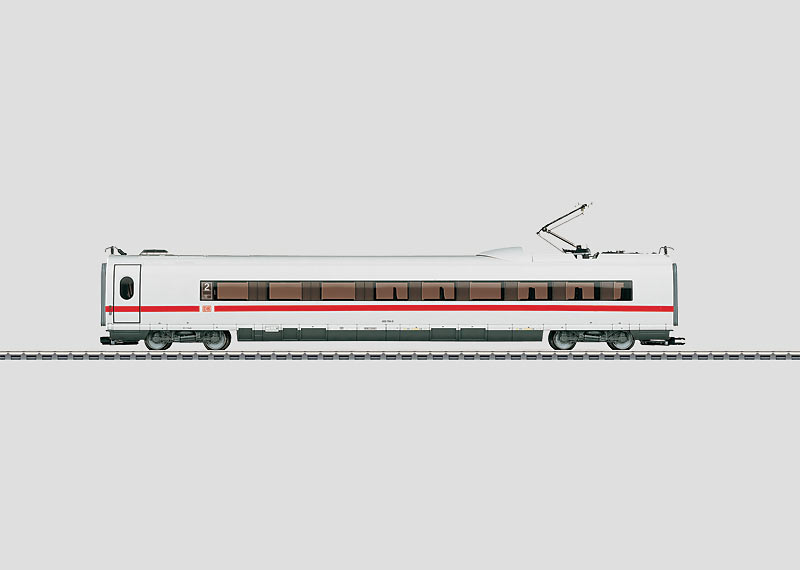- Totalt 0 :-
43736 ICE 3 Mellanvagn 406.7 DB AG
Lägg till en bevakning så meddelar vi dig så snart varan är i lager igen.
43736 ICE 3 Mellanvagn 406.7 DB AG
Gauge: H0 Era: V
Prototype: German Railroad, Inc. (DB AG) type 406.7 power converter car, 2nd class.
Model: This car is an intermediate car for adding to the model of the ICE 3 train, item no. 37786. The car has special close couplings with a guide mechanism. The interior lighting is powered by continuous electrical connections through the entire train. Length 27.9 cm / 11". ICE 3 MF - Au Revoir Frankfurt - Guten Tag Paris. Europe appears to be coming closer together on the transportation technical level as well as the political level. The keen competition from air lines is prompting the DB AG and to attempt to overcome their borders and open the route network in each country to high speed passenger service. After a very long (6 years) and costly authorization phase, everything was finally ready on June 10: The ICE 3 MF ("MF" stands for Multiple System France) is running between Frankfurt/Main and Paris. It runs at a maximum speed of 320 km/h / 200 mph on the new French high speed route LGV Est, and the train arrives in just 4 hours at the Gare de l'Est station in the French capital. Due to the different technical systems used for the the ICE and the TGV respectively, 120,000 kilometers / 75,000 miles of test runs and several conversions on the trains were necessary so that the German trains could run with no problems on the 25 kilovolt routes in France. Most importantly, the train had to be adapted to the French train control system and safety equipment such as fog signals, warning lights, red flags, and flares for stopping trains coming from the other direction are now on board. The train also underwent a change in the control of the eddy current brakes that had already caused problems in the authorization process in Belgium, as well as changes to the doors, and the high tension layout. The trains were improved aerodynamically in the areas of the car diaphragms and trucks in order to prevent damage from flying roadbed ballast. A select locomotive engineer team also had to obtain permission to run the train on the French routes so that the ICE could run between the countries without time-consuming crew changes. The authorization process cost the two state railroads 28 million Euros, which signifies for many business travelers a considerable improvement in the transportation services offered and that brings Europe one more step closer together.


